L.E. Carmichael's Blog, page 8
June 21, 2023
Happy Solstice, Everyone!
Hi all! This post was scheduled to publish while I was away on a well-earned holiday. I returned to discover that the tech gods were also on holiday that week. Oh well, better late than never.
It’s International Day of the Celebration of the Solstice, a rather clunky name which is almost as long as the day itself, lol. But the day is still worth celebrating. Those of us in the Northern Hemisphere are soaking up the sun on the longest day of the year. When I lived in Yellowknife, we celebrated the Midnight Sun with a festival called Raven Mad Days. It was a big deal, because it signalled not just summer, but the start of summer vacation, and we got to stay up as late as we wanted.
Now that I’m officially an “old,” I go to bed whether it’s light out or not… and resign myself to the fact that the days are only getting shorter from here.
On the other hand, if you, like this happy little Adélie penguin, happen to live in Antarctica – good news! Sunlight is on its way back to you.
Wherever you happen to be, I wish you a very happy Solstice.
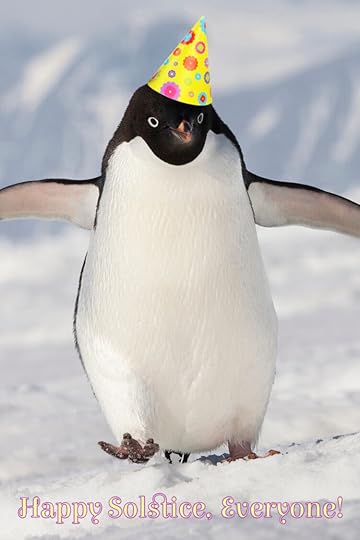
Teachers! I realize you’re celebrating the end of another school year and that planning for the fall is the last thing on your mind. But if you contact me before September 1 with code SOLSTICE23, I’ll give you 10% off the cost of a school visit. Visit my programs page to see how I can help your students kick start their STEM learning!
June 8, 2023
For World Oceans Day: Sleepy Seals and Greenland Sharks
I am so glad that World Oceans Day is finally here! I’ve been holding on to some truly AMAZING ocean info – info we cut from Polar: Wildlife at the Ends of the Earth due to concerns it was a little too intense for the average eight-year-old.
Intense and shudder-inducing and exactly the kind of thing my eight-year-old self was all over.
Content warning has been delivered: let’s dive in!
Sleepy SealsDid you know that cetaceans and eared seals (fur seals and sea lions) have a thing called unihemispheric sleep? It means that only one side of their brains is asleep at a time, which is especially handy for whales and dolphins that can’t haul out of the water when they need a nap.
On the other hand, all of the other seals have bilaterally symmetrical sleep, just like land-based mammals. Both sides of their brain are sleeping at the same time, meaning they can’t detect or evade predators unless they wake up. Ringed seals protect themselves from stalking polar bears by sleeping in the water. But sleeping in the water makes them uniquely vulnerable to a predator of a different sort.
Dun dun… dunn dun… duuunnnn dun dun dun dun dun dun dun….That’s right: sharks. Greenland sharks, to be precise.
For a long time, scientists thought Greenland sharks were scavengers. And they definitely feed on dead things – their stomach contents often include sea stars and other ocean-bottom species, in addition to meat from rotting carcasses (including at least one polar bear). More recent studies, however, have revealed shark stomachs that only contain fresh seal… meaning the sharks hunt live prey, too.

This is an illustration, not a photograph of a real shark. You can tell, because the creepy eye parasites are not pictured!
But seals are quick and nimble, whereas Greenland sharks often swim slower than the stall speed of scientific sensors – 0.17 m/s (compared to 0.85 m/s for great whites and 1.07 m/s for tiger sharks). So how can these slow-moving sharks catch live seals?
Camouflage and stealth. Greenland sharks have cryptic colouration that helps them blend into their ocean habitat, especially in the low light levels that are typical of Arctic winters or areas beneath the ice pack. It’s likely that seals don’t see the shark coming until it’s nice and close. It’s also likely that the sharks sneak up beneath sleeping prey and – rather than biting – suck whole seals into their gaping jaws.
Which leads to the question – if the water is full of hungry sharks, how can sleeping there be adaptive for the seals? Scientists figure seals are playing the odds… and that getting chomped by a polar bear is much more likely than getting swallowed by a shark.
Want more amazing Greenland shark facts? I’ve got ’em:Most Greenland sharks are infected by a parasite called Ommatokoita elongata. It bites onto the sharks’ eyeballs, its body dangling in the surrounding water, and can grow up to 6 cm long. There are pictures online, but you do not want to see them. Trust me: it’s nightmare fodder.The parasites impair the shark’s vision and may even cause blindness… but the shark just keeps swimming.Brain regions for eyesight in this shark are small, but about 1/3 of the brain is devoted to its sense of smell. Scientists suspect sharks are following “odour trails” through the sea. Seals are especially stinky, which would help sharks find them in the first place. The earliest fisheries record of the Greenland shark is from Norway, in the 13th century! In Iceland, people still eat them, but only after letting them… well, rot.The smallest Greenland shark ever caught was 42 cm long, suggesting they’re between 40 and 100 cm long at birth.Females must be at least 400 cm long to reproduce. Scientists estimate a shark that length is at least 156 years old!The largest Greenland shark ever caught was 640 cm long and weighed 1023 kg. It needed at least 272 years to get that big.Because Greenland sharks spend most of their time in deep water, scientists don’t know very much about them. But animals that grow slowly and rarely reproduce are inherently vulnerable to habitat changes or overfishing. Check out the St. Lawrence Shark Observatory – originally the Greenland Shark & Elasmobranch Education and Research Group – to learn more about Canadian studies of this and other ocean species.
This World Oceans Day, gift your junior nature-lover a great science book. I recommend The Global Ocean, by Canadian author Rochelle Strauss!
June 5, 2023
World Environment Day and the Problem of Polar Pollution
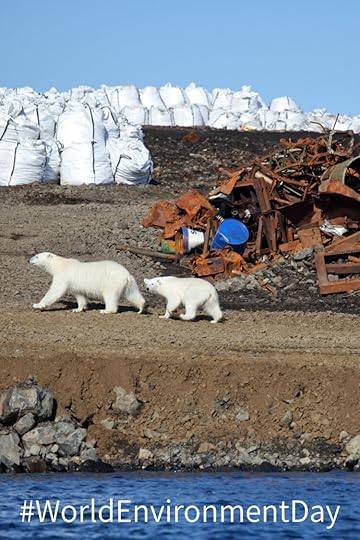 When I started research for Polar: Wildlife at the Ends of the Earth, I knew that Arctic and Antarctic ecosystems are particularly vulnerable to climate change. I didn’t know that they are also particularly vulnerable to pollution. It’s World Environment Day today, so I wanted to share some things about a threat that – I suspect – other people might not know much about either.
When I started research for Polar: Wildlife at the Ends of the Earth, I knew that Arctic and Antarctic ecosystems are particularly vulnerable to climate change. I didn’t know that they are also particularly vulnerable to pollution. It’s World Environment Day today, so I wanted to share some things about a threat that – I suspect – other people might not know much about either.
First, a type of pollution that has received a lot of attention in the media: plastic pollution. Because the world’s oceans are really one big global ocean, plastic has an impact on both polar seas.
Global oceans contain more than 250 million tonnes of plastic waste. More than 200 species of fish, mammals, turtles, and seabirds are known to eat plastic. Seabirds are particularly prone to this odd behaviour, and scientists have identified a possible explanation.
Algae are tiny plants that form the base of the ocean food chain. When krill and other tiny predators eat the algae, the plants release a chemical called DMS. Seabirds in the “tube-nose” family – like prions and petrels – can smell this chemical distress signal. They follow the scent, honing in on patches of ocean that are full of krill and the fish that eat krill. In other words, DMS is a dinner bell for seabirds.
Here’s the connection to pollution. Many commonly-used types of plastic float in seawater. Ocean algae grows on floating plastic – the same algae that release DMS. Less than a month after the plastic hits the water, it smells strongly enough of DMS to attract hungry seabirds. Scientists call this an “olfactory trap,” and estimate that, by 2050, 99% of seabird species will have eaten plastic. The consequences will range from physical blockage of their digestive systems to poisoning as the chemicals in and on plastic are absorbed by their bodies.
Fortunately, plastic pollution has received enough attention in the media that many countries are working to solve the problem. Remembering to bring our reusable bags into the grocery store is a small price to pay to protect petrels.
Shallow Soils and Slow CyclesOcean currents carry pollution to both poles. Currents in the atmosphere can have similar effects. For example, smelting of metal ores produces gases and airborne particles that can be carried on the winds. Ice cores taken from Greenland’s glaciers contain lead particles that date between 500 BCE and 300 CE. The lead is four times more concentrated than normal background levels, and was probably produced in Ancient Rome, during the manufacture of lead plumbing pipes. Radioactive particles from the Chernobyl explosion are also detectable in the Arctic, many miles away from their point of origin.
Once pollutants like these arrive in the polar regions, they tend to stick around. That’s because break-down, processing, and nutrient cycling is normally done by bacteria, fungi, and other decomposers… and nature’s recyclers only operate when temperatures are above freezing.
BioaccumulationThe vast majority of Antarctica stays frozen year round, but summer does come to the Arctic tundra. In peat bogs, rainwater can carry pollutants deeper into the soil than plant roots can reach. But in many areas of the Arctic, rock or permafrost is just a couple inches down. That means pollutants get trapped near the surface, where they are easily absorbed by plants. Once in the plants, they travel to the herbivores. Once in the herbivores, they travel to the carnivores. With every step up the food chain, pollutants become more and more concentrated.
This process is called bioaccumulation. If the pollutant is toxic, bioaccumulation can have devastating effects. For example, bioaccumulation of DDT pushed peregrine falcons – a species that nests in the Canadian Arctic – to the brink of extinction. The chemical interfered with formation of eggshells, and birds laid eggs so fragile that they were crushed under their parents’ bodies. Because of its effect on wildlife, DDT has been banned in North America, and peregrine populations have begun to recover.
Fighting for the FuturePollution is a bigger problem in the Arctic than Antarctica. That’s partly because more people have lived in the Arctic for much longer, and partly because of the strict international treaties that protect Antarctica from excessive human impacts.
In the Canadian Arctic, mining and oil industries are expanding, raising concerns about impact on fragile habitats. One potential problem is leakage from oil pipelines, as oil is toxic to many arctic plants. Up to 20% of the annual oil production of Russia is thought to be lost through leaky pipelines – a mind-boggling amount.
Human activity is absolutely a problem for the polar regions. But human activity can also be the solution. We’re banning plastic and pollutants like DDT. We took action to reduce acid rain and heal the holes in the ozone layer. This World Environment Day, let’s continue making choices that will protect some of the most vulnerable places on our planet.
Many organizations are working to protect Canada’s Arctic. Visit their websites to learn how you can help:
Ocean’s North: Canada’s Arctic Marine Atlas
WWF: Arctic Species Conservation Fund
Wildlife Conservation Society Canada: Arctic Conservation
Nature Conservancy Canada: Boreal and Arctic
May 26, 2023
Heather Camlot: Truth, Justice, and the Nonfiction Way
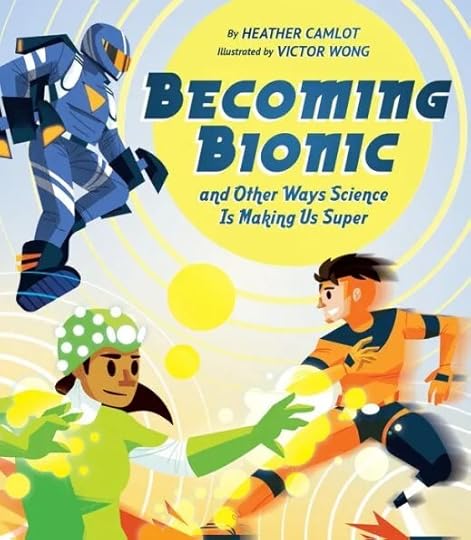 Welcome to Cantastic Authorpalooza, featuring posts by and about great Canadian children’s book creators! Today’s guest: Heather Camlot
. Take it away, Heather!
Welcome to Cantastic Authorpalooza, featuring posts by and about great Canadian children’s book creators! Today’s guest: Heather Camlot
. Take it away, Heather!
How does an author known for books about history, social justice and sports write a book about science and superheroes? By calling up her past.
I never studied science, and I’m certainly not a superhero (I don’t think), but as a journalist I spent a decade writing health articles for leading Canadian magazines and websites, and even longer writing about the arts – film, television, fine arts and music — for publications on both sides of the border. Those two disparate topics – health and arts – were how I made my living for a very long time.
“I can do this all day” – Captain America
Fast-forward to my work translating articles for Owl Magazine from its French sister publication Les Débrouillards. But I didn’t just translate the words on the pages, I soaked up these amazing stories of flying men, invisible towers, and strong fibers made from slime. I saved them all, not only because I contributed to them, but because I felt like there was so much more to tell.
I continued to collect other fascinating stories that I came across in my daily newspaper and began researching online. Journalists are trained to do research, and I can easily lose myself in that online rabbit hole, digging and digging until I find a gem that I need to share. Some days I wish I could stay down there forever! Eventually, I had a treasure chest of gems, and somehow it struck me (with my super-brain?) that they were oddly similar to the superpowers that film, television and comics have been entertaining us with for almost a century. Science IS turning us into superheroes!
“Flame on!” – The Human Torch
Using six main superpowers – parts, flight, sight, strength, brains and survival — to break up the content of what would become Becoming Bionic made it easier to do further research and draw up a nonfiction proposal about science and superheroes – about health and arts. And I sent that proposal along to the one publisher I knew would likely be interested: Sibling to Owl Magazine, Owlkids Books.
To give all these scientific advancements some shape and perspective, editors Karen Li and Stacey Roderick and I opted to start each of the “super” sections with a timeline of important scientific inventions. The side of my brain (reminder, I didn’t study science) that loves history was super-excited. My passion for social justice was satisfied by using the book’s conclusion to discuss the ethics of turning humans into immortals. As for sports, short write-ups are sprinkled throughout the book, from discussing athletic prostheses to the anatomy of a bodybuilder to the use of anabolic steroids.
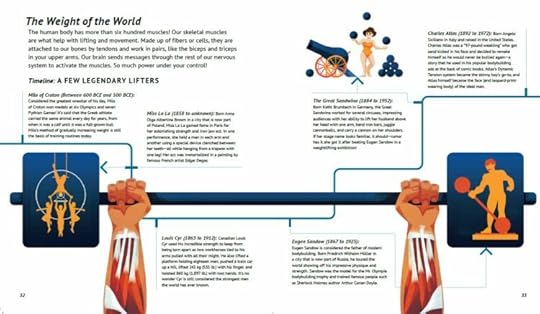
“Thank you for your cooperation” – Black Widow
Writing Becoming Bionic was a challenge I was ready to take on. Unlike Wolverine, I’m not the best there is at what I do, but I knew my research and factchecking skills (a-hah, my superpowers!) would help me battle any bad science I came across, and I had three sidekicks who had my back: editor Stacey Roderick and my friends Mitchell Brown and Dr. Jonathan Fridell. This was my third book with Stacey and working with her gives me every confidence in the world that I can achieve what I’ve set out to do. Stacey also found illustrator Victor Wong. When she sent me the link to his website, I was blown away. His work in Becoming Bionic will blow readers away too. He made all the science way cooler than my words ever could.
Mitchell is a comics fanatic and answered every question I threw at him. And I threw him a lot. I mean a lot. Jonathan, who reviewed the manuscript in its entirety, had more issues with my superhero references than my medical write-ups! Except for one point, which I included in the book and in the acknowledgments: that immortality can also come through organ donation and being remembered by others. As a transplant surgeon and the son of my late father’s best friend, Jonathan’ s reminder was insightful and emotional.
“So long as there is hope…” – Wonder Woman
So how does an author known for books about history, social justice and sports write a book about science and superheroes? It’s not about what you’re known for. It’s also not about what you’ve done in the past. If you have a great idea, solid research and factchecking skills, excited editors, and willing experts, then dive into what grabs and inspires you. Because if you’re fascinated by the subject, then chances are readers will be too.
May 19, 2023
Karen Patkau: A Flower is a Friend
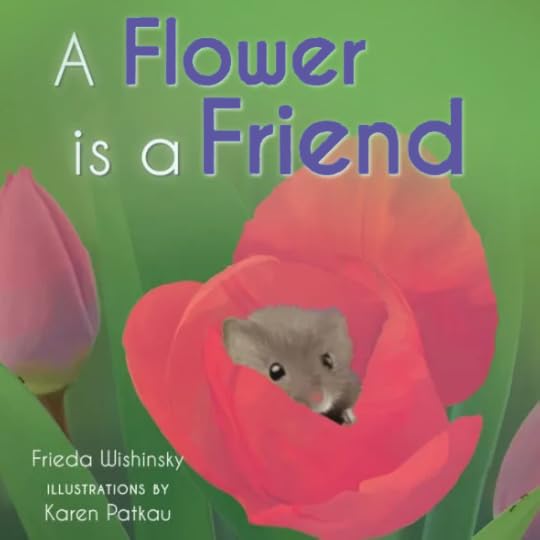 Welcome to Cantastic Authorpalooza, featuring posts by and about great Canadian children’s book creators! Today’s guest: Karen Patkau
. Take it away, Karen!
Welcome to Cantastic Authorpalooza, featuring posts by and about great Canadian children’s book creators! Today’s guest: Karen Patkau
. Take it away, Karen!
This book was a collaboration from the beginning. Ideas for words and images exchanged between friends.
On a warm summer day, as Frieda and I relaxed in her beautiful garden, we noticed birds and insects whizzing and settling among the flowering plants. Frieda showed me a photo she’d taken of a butterfly sipping nectar from a zinnia. It looked like they were kissing.
Together we wondered, “Is there a picture book here?”
The seed of an idea was planted, so to speak. We brainstormed concepts for the book and came up with a list.
It would be nonfiction, featuring a different flower and animal interacting with their environment on each spread. Frieda would write the words. The text would be minimal, lyrical and engaging. I’d do the images. They would be lush and colourful. A spread with an entire flower garden and the animals in it would be featured somewhere. Back matter would provide a sampling of scientific detail, describing the different mutualistic roles.
Frieda prepared the manuscript and I did three sample illustrations, which we pitched as an author/illustrator package. Publishers usually don’t want this kind of submission, unless the author is also the illustrator. However, Frieda and I have worked with many publishers through the years and we thought we’d give it a try. Fortunately, Pajama Press loved our proposal.
So this seed of an idea sprouted and grew. We watered and pruned until it blossomed into A Flower is a Friend.
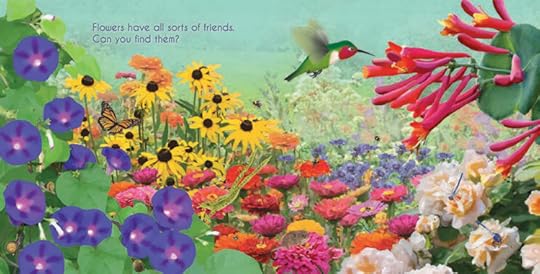
Reviews:
★“ Beginning with this quietly lovely book’s first spread, blossoms proudly announce themselves in clear, simple prose and describe how they help their friends….The remarkable digital illustrations, so photographically, lusciously lifelike that one can almost smell floral aromas wafting from the pages, call for readers’ close scrutiny….A garden of gorgeous delights.”—Kirkus ★ Starred
“This appealing picture book takes viewers on a close-up tour of a garden….Wishinsky’s age-appropriate text talks of friendships between flowers and animals and uses questions to engage her audience….Patkau’s vibrantly colorful illustrations are eye-catching and helpful. An intriguing picture book on flowers and their friends”—Booklist
“… Follow the little mouse into this delightful picture book that offers valuable scientific insights by arousing, in the earliest readers, a sense of wonder for nature.… the symbiosis between flowers and the small creatures that interact with them is shown in delicate, glowing digitally created images. They are paired with minimal text: a verb and noun that describe the relationship (e.g. kiss a butterfly), and a question (e.g. why do butterflies and zinnias love being together?).… Enjoy both quiet moments with the pictures and the fun of discovery with the text in this thoughtful book. – ***** Highly Recommended – Canadian Materials
Karen Patkau is an award-winning author and illustrator. Her work can be found in twenty -five picture books. Karen graduated from the University of Manitoba with a Bachelor of Fine Arts Honours degree, and became interested in visual storytelling while studying for her Master of Visual Arts degree at the University of Alberta. She has been writing and illustrating with a focus on nature nonfiction for many years. Visit her website at www.karenpatkau.com.
May 13, 2023
The Marathon Migrations of Arctic Terns
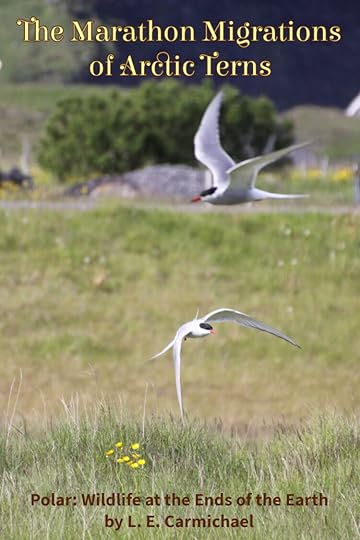 First things first! I’m at Science Rendezvous Kingston today with some friends and fellow science writers. If you’re in the area, come on down! It’s free and suitable for all ages.
First things first! I’m at Science Rendezvous Kingston today with some friends and fellow science writers. If you’re in the area, come on down! It’s free and suitable for all ages.
In 2014, Tech Support and I were lucky enough to visit Iceland during June, when migratory birds were nesting. We saw puffins and petrels and gulls and guillemots packed onto jagged cliff edges. But what I remember most is walking through the field back to the tour bus and getting dive-bombed by arctic terns who’d built their nests in the long grass flanking the path.
Today is World Migratory Bird Day, making it the perfect day to talk about terns – the champion migrators of the biological world. Adult terns weigh about 100 g, and every year, they make round-trip journeys of up to 50,000 km. 50,000 km, at speeds of up to 670 km per day.
The “legs” of a tern’s journey are typically different lengths, but for the ease of math, let’s assume they are the same. That’s 25,000 km one-way. The record one-way migration for an adult male humpback whale is 18,840 km.
Terns can live more than 30 years, meaning one tern might travel more than 2.4 million kilometers during its lifetime. That’s the equivalent of about three trips to the Moon and back. I’m exhausted just thinking about it!
What could possibly motivate such teensy birds to make such epic journeys? Well, terns nest in the Arctic, during summer in the Northern Hemisphere: they’re arriving at their breeding grounds right around now.
Terns molt – shedding old feathers and growing new ones – in Antarctica, during summer in the Southern Hemisphere. In other words, terns never experience winter: they are always in the right place, at the right time, to take advantage of long summer days and mild temperatures.
Migration timing also seems to be linked to periods of peak ocean productivity. Scientists tracking terns with tiny GPS loggers have shown that terns arrive in each staging location right when the most fish and krill are available to eat – important, because those rich food sources give them the energy they need to keep going. When they reach Antarctica, they also tend to hang out on icebergs or the edge of the pack ice. This gives them solid surfaces to rest on, but really easy access to open water for fishing in.
For terns, the benefits of their extreme migrations seem clear. But migration is not without its risks – for terns and many other species. All that travel takes a ton of energy. Birds can get lost or blown off course in bad weather. They have to pass through areas of unsuitable habitat – places without food, or places inhabited with unfamiliar predators. Birds that orient using natural light cues often get confused by the lights of human cities.
That’s why many migratory bird species are protected under the Migratory Birds Convention Act. You can explore the list of species protected in Canada at this link. Arctic terns are included!
For some ways you can help protect birds this World Migratory Bird Day, check out these lists:
Five Ways You Can Make a Difference for Migratory Birds
Six Ways to Help Migratory Birds
10 Ways to Help Migratory Birds
Arctic terns are one of several migratory birds that appear in Polar: Wildlife at the Ends of the Earth. The book is out now – grab your copy at your favourite indie bookseller, or one of the online retailers below:
I’m doing a Polar presentation at the Brighton Public Library on May 30, and I’m still booking Polar-themed school visits this spring! Contact me to inquire about dates and rates.
May 2, 2023
Polar Presents: Official Activity Guide and Other Free Resources Around the Web
Happy Book Birthday to Polar: Wildlife at the Ends of the Earth! Get your copy from Amazon Canada or Amazon USA, from Chapters/Indigo, from Barnes & Noble, from Target, or (best of all) from your local independent bookstore!!
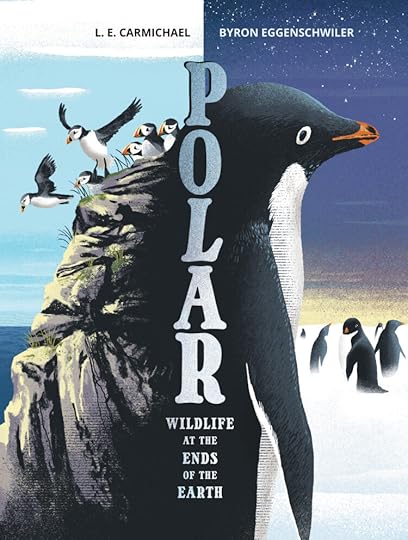
The best kind of birthday party is the kind where everyone gets presents: I get to see a book I’m incredibly proud of make its way out into the world, and teachers, parents, librarians, and young readers get free resources.
Polar Presentations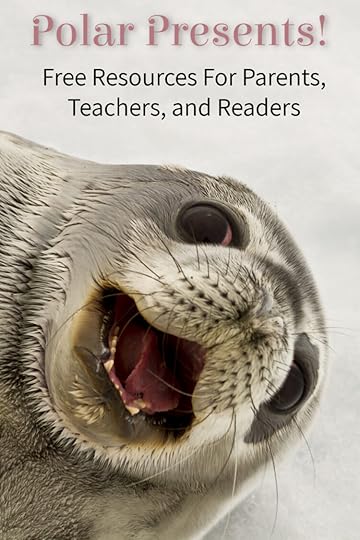 First things first! I’m doing a free Polar presentation with Exploring by the Seat of Your Pants today at 12:30 Eastern. Head over to their YouTube channel to watch. You can also catch the recording on demand. And remember you can always contact me to book a virtual or in-person author visit – I’ve got lots of STEM and writing programs to choose from.
First things first! I’m doing a free Polar presentation with Exploring by the Seat of Your Pants today at 12:30 Eastern. Head over to their YouTube channel to watch. You can also catch the recording on demand. And remember you can always contact me to book a virtual or in-person author visit – I’ve got lots of STEM and writing programs to choose from.
I’ll be in Toronto on May 7 for a group book launch, and in Kingston for Science Rendezvous on May 13. Check my Public Appearances page for all the details on these and other events.
Activity GuideNext up, the official Polar Activity Guide, which includes indoor activities and outdoor ideas for both summer and winter. You can download the free PDF from Kids Can Press. If you’re headed to Kids Can Press, snag your copy of The Boreal Forest Teachers’ Guide as well.
Polar-Themed Articles and WebsitesAlaska’s Sea Ice Completely Melted Earlier Than Ever Before
Arctic Temperatures Warmest in More Than 10,000 Years
Australian Antarctic Program – Wildlife Photo Galleries
How Do Emperor Penguin Dads Stop Their Eggs from Freezing?
Latest Sea Ice Conditions in Canada
National Snow and Ice Data Center
Peeking into the Underwater World of Leopard Seals
St. Lawrence Shark Observatory – info on Greenland sharks and other species
Twilight, Dawn, and Dusk – helpful for understanding light conditions in the polar regions!
Understanding Climate: Antarctic Sea Ice Extent
Lesson Plans, Activities, and Environmental ActivismCanadian Geographic Educator Resources – Climate Change and Environment
Center for Biological Diversity
Exploring by the Seat of Your Pants – Livestreamed and recorded presentations by polar experts (and many others!)
J ust for Kids: What’s Climate Change? And What Can I Do?
Million Tree Project – an initiative of Canada’s Science Rendezvous
NASA Climate Kids – What Is Climate Change?
NASA Climate Kids – What We Can Do to Help
Polar Bears International: Take Action
Project Drawdown – The World’s Leading Resource for Climate Solutions
Science Books for AdultsFor teenagers that want to learn more, or for adults who want more knowledge to help support their children’s learning – here are some of the adult-level books I consulted while researching Polar. Check your local library for borrowing options.
Antarctica: Global Science from a Frozen Continent (2013) (Walton WH Ed.). New York: Cambridge University Press.
Birds of the World. Cornell Lab of Ornithology (available by subscription online).
Crawford RMM (2013) Tundra-Taiga Biology: Human, Plant, and Animal Survival in the Arctic. Oxford: Oxford University Press.
Heinrich B (2006) Mind of the Raven: Investigations and Adventures with Wolf-Birds. New York: Harper Perennial.
Pyenson N (2018) Spying on Whales: The Past, Present, and Future of Earth’s Most Awesome Creatures. New York: Viking.
Wadhams P (2016) A Farewell to Ice: A Report from the Arctic. New York: Allen Lane.
Watson P (2017) Ice Ghosts: The Epic Hunt for the Last Franklin Expedition. Toronto: McClelland & Stewart.
Thank you for helping me celebrate the release of Polar: Wildlife at the Ends of the Earth, my 23rd STEM book for young readers! Want to help Polar reach more readers? Thank you! Here are some ways you can spread the word:
As your school or public library to add Polar to their collectionTell your friends about the bookTell followers on social mediaWrite a book review on Amazon, Goodreads, or your very own websiteDon’t forget to check my Public Appearances page for Polar virtual events and live events happening near you! Are you a teacher or librarian? I’m available for author visits in May and June – contact me to secure your spot.
May 1, 2023
Teamwork Makes the Dream Work: Cooperative Hunting in Killer Whales
ONE MORE SLEEP UNTIL POLAR, OMG!
Kermit GIF from Kermit GIFsNow that I’ve got that out of my system, it’s time for more deleted scenes – cool stuff that didn’t make it into the book.
Polar is about animal adaptations – the behaviours, body parts, and body functions that help animals survive in extreme habitats. Each spread pairs two animal species – one in the Arctic and one in Antarctica – that are using the same adaptation in different ways or in different seasons. But there are some animal species that live in both the Arctic and Antarctica. Arctic terns are one – in their case, the same individual birds occupy both habitats at different times of year.*
Orcas (killer whales) are another. In their case, however, different populations of orcas inhabit each polar sea, and as far as I was able to discover, each population pretty much sticks to its own hemisphere. Because of this isolation, Arctic and Antarctic orcas are genetically distinct. They are also culturally distinct: they speak different dialects and have developed different hunting strategies for taking different types of prey. Senior orcas teach their specialized hunting techniques to the young in their communities, passing their knowledge and experience to the next generation.
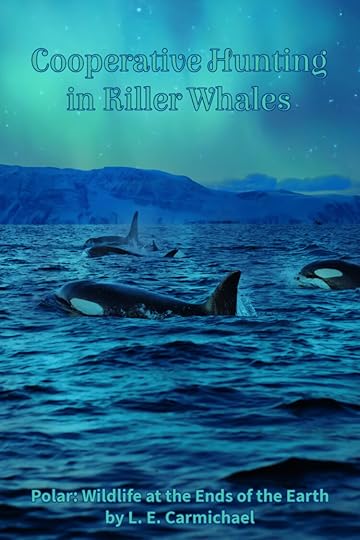 This is the coolest thing ever, and I wanted to include a spread contrasting the behaviours of Arctic and Antarctic orcas in the book. But the process of training young orcas can be a bit brutal for the poor prey, and my editor was concerned the hunting scenes might be a bit mature for the book’s target audience. If you fell in love with walruses in my earlier post, you may feel the same way. In that case, I recommend finding a copy of Kilroy and the Gull by Nathaniel Benchley, a book about an orca calf who’s captured and sent to an aquarium, but later escapes with the help of his friend Morris the seagull. I LOVED this book as a kid, and it’s a lot less “nature red in tooth and claw” than this blog is about to get.
This is the coolest thing ever, and I wanted to include a spread contrasting the behaviours of Arctic and Antarctic orcas in the book. But the process of training young orcas can be a bit brutal for the poor prey, and my editor was concerned the hunting scenes might be a bit mature for the book’s target audience. If you fell in love with walruses in my earlier post, you may feel the same way. In that case, I recommend finding a copy of Kilroy and the Gull by Nathaniel Benchley, a book about an orca calf who’s captured and sent to an aquarium, but later escapes with the help of his friend Morris the seagull. I LOVED this book as a kid, and it’s a lot less “nature red in tooth and claw” than this blog is about to get.
BUT. If you think orcas are awesome and everybody’s gotta eat – this post is for you. So here we go: unpolished text from my first draft of Polar: Wildlife at the Ends of the Earth.
Cooperative Hunting and Social LearningSome predators hunt alone; killer whales prefer to work in teams. Cooperative hunting makes bringing down large prey, like minke whales, both safer and easier. Killer whales live in both Arctic and Antarctic waters. They form long-lasting social groups, allowing adults to teach important hunting strategies to the young. Different groups of whales use different, but equally adaptive, techniques.
ArcticA dozen walruses float on the Chukchi Sea, unaware of danger until the killer whales charge. Panic! As walruses flee for shore, the whales carousel, cutting one off from the group. Normally, they would kill it quickly and efficiently. But there’s a calf in the pod, and she must learn. When the group finds prey in the vast, ever-changing ocean, she’ll need to know what to do.
Her mother swirls around the walrus, stunning it with her fluke. A cousin darts in, demonstrating the same strike. It’s the calf’s turn, but she misses. The walrus bobs to the surface, and she backs away, making room. Her mother rears up, using the weight of her falling body to push the walrus under. The whale calf isn’t heavy enough to do this, but she will be someday. For now, she pays attention until the lesson ends and it’s time for her entire family to eat.
AntarcticaIce floes bump and drift. Between them, killer whales spy hop, scouting for seals. There, on the largest floe. The pod swims away, then turns back. Side-by-side, they charge, flukes pumping in sync, building a wave. At the last second, they dive under the floe, rolling to protect their dorsal fins. Their wave breaks beneath the ice, shattering it into pieces. The seal tumbles into the sea.
Splashing and snarling, he tries to climb onto one of the fragments. But these whales are experienced hunters. With her teeth, a young adult grasps the seal’s hind flippers, tugging him into the water. Whales circle as he stands on his head, waving those vulnerable flippers in the air. Then the seal feints, darts, and breaks through the ring of teeth. Struggling, he hauls himself onto a bergy bit**—a rough chunk of glacial ice too heavy for the whales to topple. The pod swims away, searching for easier prey.
*More info on Arctic terns is coming on May 13 – World Migratory Bird Day. Stay tuned!
**Showing my Canadian here – “bergy bit” is an absolutely delightful term that Newfoundlanders use for small chunks of melting icebergs. They are also delicious in cocktails.
Polar: Wildlife At the Ends of the Earth comes out TOMORROW! EEK! Order a copy from your local independent bookstore to reduce your carbon footprint AND support a cornerstone of your community. You can also order from your favourite online retailer.
Don’t forget to check my Public Appearances page for Polar virtual events and live events happening near you. Are you a teacher or librarian? I’m available for author visits in May and June – contact me to secure your spot .
April 30, 2023
Party Like a Puffin with Polar: Wildlife at the Ends of the Earth
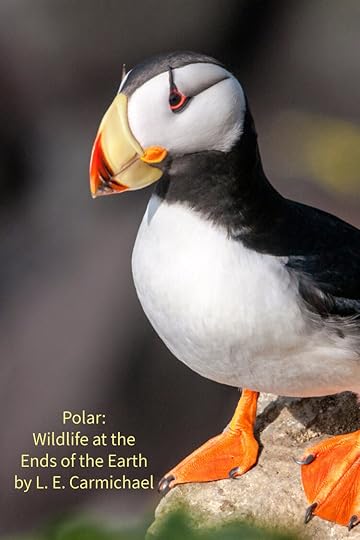 Two more sleeps until Polar: Wildlife at the Ends of the Earth lands in bookstores! I am so proud of this book and I can’t wait to share it with all of you. Which brings me to today’s topic: events! I’ve got some fun things planned this month, and I hope you’ll be able to join me, either in person or online.
Two more sleeps until Polar: Wildlife at the Ends of the Earth lands in bookstores! I am so proud of this book and I can’t wait to share it with all of you. Which brings me to today’s topic: events! I’ve got some fun things planned this month, and I hope you’ll be able to join me, either in person or online.
I am SO EXCITED to be celebrating Polar’s Book Birthday with Exploring By the Seat of Your Pants! You can tune in to this virtual event from anywhere – teachers can even snag an “on camera” spot, which will allow your students to ask me their questions directly. There will be fun facts and amazing stories, and tons of audience participation. If you’ve ever wanted to see me wearing a paper party hat, now’s your chance. The event will be streaming live on YouTube at this link, and it’s free to join.
Click here for all the details.
May 7 – Spring Book Launch – Toronto Public LibraryThe best way to celebrate spring is with brand new books! Join me – and seven other Canadian kid lit authors – as we launch our new spring titles. Participating authors include:
L. E. CarmichaelHelaine BeckerKate BlairHeather CamlotTziporah CohenCaroline FernandezValerie SherrardLorna Shultz-NicholsonThere will be readings, goodies, and probably a few surprises. Indie children’s bookseller, Mable’s Fables, will be on site – take home an autographed book or two!
Click here for all the details.
May 13 – Science Rendezvous KingstonWhat do you get when four award-winning children’s authors combine forces? A tsunami of STEM exploration – complete with actual waves!
Visitors to our booth at Science Rendezvous Kingston will get a behind-the-scenes look at how authors create STEM books out of cutting-edge science. From fractals and Fibonacci spirals, from ocean layers to ocean currents, from fossils to fox teeth, there will be something here for everyone—including storytimes featuring brand new Canadian children’s science books. Signed books will be available for purchase at A Novel Idea.
Science Rendezvous is a national event, but Kingston’s is the biggest and the best. In addition to me, Helaine Becker, Rochelle Strauss, and Ishta Mercurio there will be bees and fossils and at some point, something is bound to explode. Best of all, the entire event is free – bring the whole family!
Click here for all the details.
May 30 – Polar Party at the Brighton Public LibraryI’m doing a full Polar presentation at the Brighton Public Library in May. Elementary teachers are bringing their classes, but the event is open to the public, so don’t be shy! We’ll talk about science and writing and there will be plenty of time for questions. Autographed books will be available for purchase at Lighthouse Books, just a few blocks away.
Click here for all the details.
Other Chances to Join the CelebrationMore events may be added to my schedule – visit my Public Appearances page for up-to-date info on locations and dates.
And if you’re a teacher or librarian, I’m booking school visits in May and June. Contact me to inquire about dates and rates.
Two more sleeps!
April 29, 2023
Cache You Later: Leopard Seals and Their Leftovers
Despite what Coca Cola commercials would have you believe, polar bears and penguins have never met. Polar bears are apex predators of the Arctic, while penguins are only found in Antarctica.* That doesn’t mean penguins are safe from predation…
…because leopard seals.
Leopard seals may look cuddly, but don’t be fooled. Females get up to 12 feet long and weigh more than 1100 pounds – quite literally the size of polar bears.** Leopard seals are fierce predators, taking penguins, fur seals, bottom-dwelling ice fish, and pretty much anything else they can get their teeth into. They’re also fiercely competitive, frequently stealing kills from other leopard seals.
Much of what we know about the hunting behaviour of leopard seals comes from studies done by Doug Krause with support from National Geographic. Check out this amazing video featuring footage from “crittercams” mounted on leopard seals:
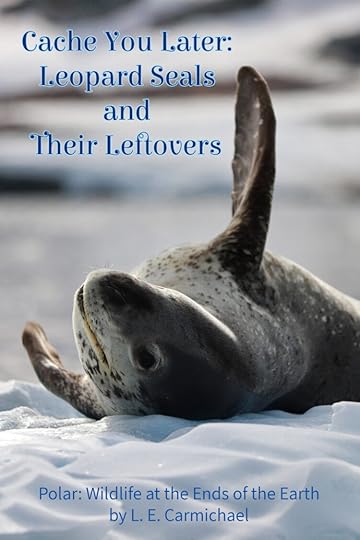 Krause’s studies also revealed a previously unknown behaviour in leopard seals – caching! Like ermines in the Arctic, leopard seals will kill more prey than they immediately need, storing the excess for later.
Krause’s studies also revealed a previously unknown behaviour in leopard seals – caching! Like ermines in the Arctic, leopard seals will kill more prey than they immediately need, storing the excess for later.
While caching seems cruel, it’s an important survival skill for predators whose food supplies vary from year to year, or at different times throughout the year. After all, penguin chicks and fur seal pups are only small and vulnerable for a short time… after which a leopard has to work a lot harder to catch a meal.
Unlike ermines, who can hide their caches so well not even scientists can find them, leopard caches are often raided by other predators. Here’s a deleted scene from Polar: Wildlife at the Ends of the Earth, that illustrates the challenges:
The leopard seal raided the penguin colony all day, patrolling the floe edge as birds came and went. Breeding season is almost over, and the surplus food it provides will dwindle. The leopard must catch all she can, even if she’s no longer hungry.
The seal swims away from the colony, a carcass in her jaws. Cruising through leads in the pack ice, she looks for a place to store it. Perhaps this crack will do? She wedges the carcass into the gap, but skuas descend instantly, looking for a free meal. The leopard barks and lunges at them, but she’s outnumbered. Pulling the carcass free, she dives to escape the birds, looking for a better larder.
There, under the roots of a grounded iceberg. The seal tucks her prey into the hollow. It starts to float, so she nudges a rock on top to hold it in place. She’s the only leopard seal for miles. The food will be safe here until she returns for it.
She’d better not wait too long – Krause’s studies showed that underwater caches are quickly discovered – and devoured – by ocean scavengers!
Bonus for Teachers and Homeschoolers:
While googling for the video clip this morning, I happened upon a lesson plan National Geographic has assembled for leopard seals. You can find the video and other resources at this link.
*And a few other places South of the Equator.
**Also larger than males of their species, which is unusual in mammals!
Polar: Wildlife At the Ends of the Earth comes out in 3 more sleeps! EEK! Pre-order a copy from your local independent bookstore to reduce your carbon footprint AND support a cornerstone of your community. You can also order from your favourite online retailer.
Don’t forget to check my Public Appearances page for Polar virtual events and live events happening near you! Are you a teacher or librarian? I’m available for author visits in May and June – contact me to secure your spot .



